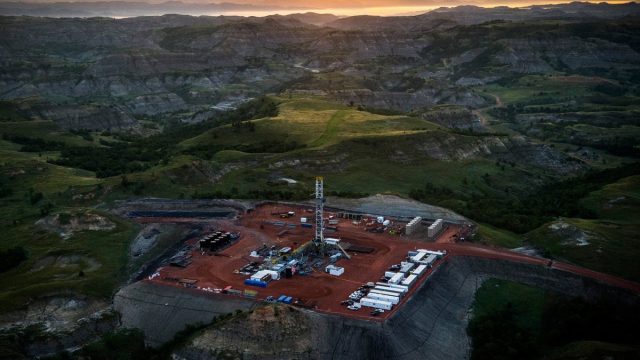New York Times Accidentally Undermines The Narrative On North Dakota Oil Development

In recent years when the New York Times has turned its editorial eye toward North Dakota it has been to paint the state as a sort of hydrocarbon hell hole.
Case in point, a (factually challenged and politically driven) two-part series by Times reporters Deborah Sontag and Robert Gebeloff from late 2014 made readers feel as though the western part of the state were nothing but a gigantic oil spill presided over by a bunch of state regulators squarely in the pockets of the oil industry.
Of course, people who actually live in North Dakota and visit the oil patch and who aren’t blinkered by partisan politics know this is hardly the truth.
[mks_pullquote align=”right” width=”300″ size=”24″ bg_color=”#ffffff” txt_color=”#000000″]”Fly into Dickinson in western North Dakota to visit the park named after him, where rolling grasslands dotted with bison collapse into the spectacular red, white and gold badlands of tumbling mud coulees,” the paper states. [/mks_pullquote]
And lie to that narrative is the Times itself. In the paper’s “52 places to go in 2016” feature Theodore Roosevelt National Park in the North Dakota oil patch comes in at position number five. Immediately after the U.S. Virgin Islands, Malta in the Mediterranean Sea, the Bordeaux region of France, and Mexico City.
And not so that left-wing Times readers can come protest the drilling rigs, either.
“Fly into Dickinson in western North Dakota to visit the park named after him, where rolling grasslands dotted with bison collapse into the spectacular red, white and gold badlands of tumbling mud coulees,” the paper states. “Lonely dirt roads bring you to one of the park’s less-visited attractions, Elkhorn Ranch, about 35 miles north of Medora, where Roosevelt arrived in 1884 as a young New Yorker ready to raise cattle and heal from the deaths of his wife and mother.”
So which is it, New York Times? Is North Dakota’s oil patch – which Dickinson and Theodore Roosevelet National Park are squarely inside – a wasteland of oil spills and ugly fossil fuel development?
Or is it what those who visit know it is, which is to say a beautiful place to visit where responsible oil and gas development has taken place alongside gorgeous scenery and interesting historical areas?
You can’t have it both ways.




